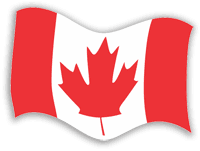|
When analysts call Canada an administrative state, they’re
usually referring to the size and structure of the Canadian
public service. What began in the 19th century as a relatively
small organization characterized by political patronage
appointments has evolved to become the largest single employer
in the country.
Big, yes, but critics often exaggerate the size of the public
service by confusing it with the public
sector — the more than
three million Canadians who work for organizations that receive
much of their funding from one or more levels of government.
The public service
refers to the 250,000 Canadians who serve federal government
departments and organizations that are staffed by Ottawa’s
Public Service Commission.
These Canadians hold an incredibly diverse selection of jobs.
Among their many duties, public servants develop and implement
policy, enforce regulations, analyze and assess government
programs, communicate the government’s intentions to Canadians
and protect Canadians at home and abroad.
The Public Service Commission was established in 1908 to ensure
that public servants were hired on the basis of merit, not
because of their powerful friends or how they voted in the last
election.
Today, the commission is also committed to building a public
service that reflects the multicultural characteristics of the
Canadian population. Until the 1970s, the focus was on improving
French-speaking representation. Today, women, visible
minorities, aboriginal Canadians and disabled Canadians have all
been targeted as favoured employees.
For a century, public servants have been expected to serve the
government of the day impartially, but a number of 20th century
prime ministers have distrusted their bureaucracies.
For example, Prime Minister John Diefenbaker referred to the
civil servants he inherited in the Department of External
Affairs as “Pearsonalities” because he believed that they were
committed to advancing the interests of the leader of the
Liberal Party, Lester B. Pearson, a diplomat and former External
Affairs minister. Diefenbaker later came to appreciate the
professionalism and loyalty that characterized the vast majority
of public servants, but his change of heart did not extend to
his successors.
In the 1970s, Prime Minister Pierre Trudeau decided that the
bureaucracy had become too powerful and independent and made
drastic changes to the nature of public service employment. His
most senior public servants — the deputy ministers — who had
become used to serving in single departments for years, began to
be shuffled into new jobs every few years, making it harder for
them to develop the knowledge and experience necessary to shape
policy effectively.
This process speeded up in the 1980s, changing the role of
senior public servants. Instead of being policy advisors, they
now became departmental managers. Instead of helping the
government devise the policies that best served the country’s
interests, they became experts in organizing study groups,
coordinating meetings and implementing the will of their
political masters.
As the public service became bigger and more expensive to
maintain, it also became a prime target of government cut-backs.
Nevertheless, despite repeated efforts to decrease the size of
the bureaucracy, the public service has continued to grow.
Popular resentment of that growth is strong. But the public
service’s union since 1966, the Public Service Alliance of
Canada, is one of the country’s largest and most powerful trade
unions, and every effort to cut staff is met with resistance.
There have also been a few instances of gross professional
misconduct that have led to a significant decline in public
service morale. The decline in morale could not have come at a
worse time. Much of
the senior leadership of the public service is nearing
retirement, and the challenges to replace them will be great.
Moreover, the politicians have not made things easier. In the
past, departmental failures were the responsibility of cabinet
ministers. Today, it is common to blame public officials, not
government ministers, for problems. In other cases, governments
have stopped their officials from speaking freely in public,
frustrating and angering Canadian public servants.
As a result, the future of the public service is worrying. The
challenges that Canadian governments will face in the future
call for greater public accountability, closer coordination
among government departments, and more reliable cooperation
between the government and its officials. This can only happen
if the public service is staffed by strong, committed men and
women who have a trusting and respectful relationship with their
political superiors. It is increasing difficult to attract and
hold these types of Canadians.
Further Reading: Donald
Savoie, Public Servants, Ministers, and Parliament
Next Instalment: Canadian
Law and Order: The Courts
The Canadian Experience
is a 52-week history series designed to tell the story of our
country to all Canadians. Sponsored by Multimedia Nova
Corporation and Diversity Media Services/Lingua Ads partners,
the series features articles by our country’s foremost
historians on a wide range of topics. Past articles and author
bios are available at http://www.cdnexperience.ca.
The Canadian Experience is
copyright © 2010-2011 Multimedia Nova Corporation.
|
|
 #11 Bureaucratic
Nightmares: The Public Service and the Future of Canada
#11 Bureaucratic
Nightmares: The Public Service and the Future of Canada
